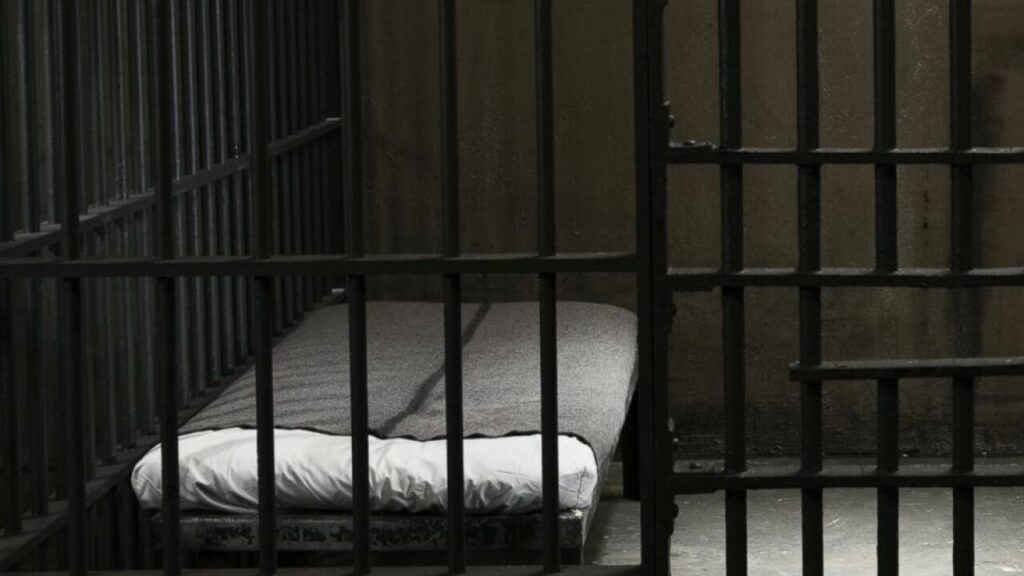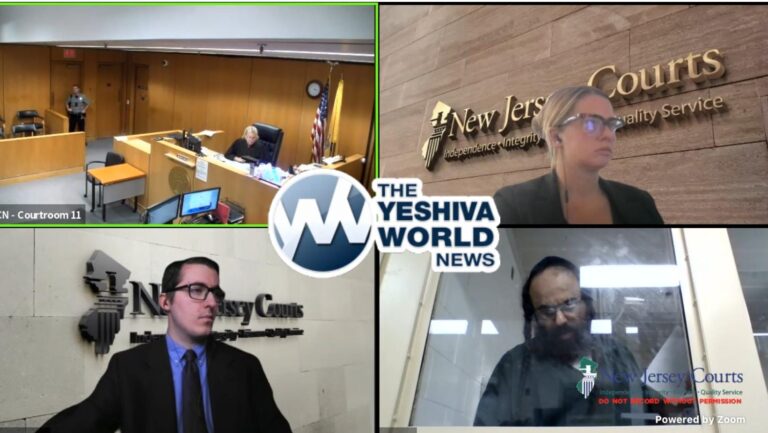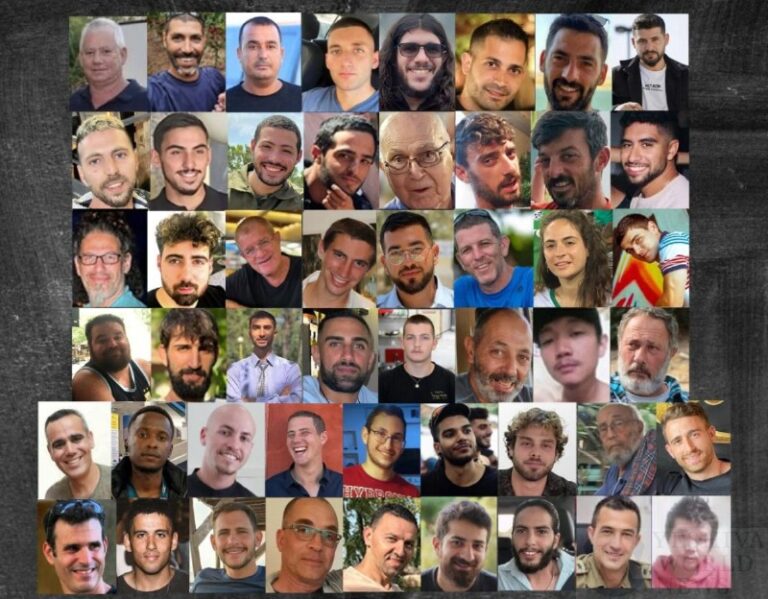By Rabbi Yair Hoffman for 5TJT.COM
Unfortunately, it seems that every month or so, we read about an Israeli or another Jew who has, unfortunately, perhaps been falsely incarcerated in a foreign jail or prison. Fortunately, there are politicians and askanim who do their best to release them. The question is, do they bench gomel when they are released?
Time, place, and specific circumstances are often factors in the determination of many aspects of the application of halacha. A few years ago, a Jewish lawyer in prison sent the following account of what it is like being in prison to the Southern Poverty Law Center Intelligence Report. The account, in this author’s view, may provide insights as to the nature of bentching gomel after jail or prison.
“I am always the last person to eat. It’s part of a compromise I worked out with the skinheads who run the western state prison complex where I am incarcerated. Under this compromise, I’m allowed to sit at the whites’ tables, but only after the “heads,” and then the “woods,” and then the “lames” have eaten. I am lower on the totem pole than all of them, the untouchable. I should feel lucky I’m allowed to eat at the whites’ tables at all.
Not that there’s anywhere else I could eat. The prison yard is broken down into five distinct racial categories and segregation is strictly enforced.. It is an inviolate rule that different races may not break bread together under any circumstances. Violating this rule leads to harsh consequences. If you eat at the same table as another race, you’ll get beaten down. If you eat from the same tray as another race, you’ll be put in the hospital. And if you eat from the same food item as another race, that is, after another race has already taken a bite of it, you can get killed..
This makes it difficult for me, of course, to fit into the chow hall. Jews, as we all know, are not white but impostors who don white skin and hide inside it for the purpose of polluting and taking over the white race. The skinheads simply can’t allow me to eat with them: that would make them traitors of the worst kind — race traitors! But my milky skin and pasty complexion, characteristic of the Eastern European Ashkenazi, make it impossible for me to eat with other races..So the compromise is that I may sit at certain white tables after all the whites have finished eating. In exchange, I must do free legal work..
This compromise was brokered by the more “mainstream” Nazis on the yard, the Aryan Brotherhood..The Aryan Brotherhood (AB).. are the old guard, the white leadership that has run the yards for years. They control the drug markets, the poker tables, the tattoo shops..”
THE BASIC HALACHA
The Gemorah in Brachos (54b) informs us that there are four people who are required to bentch gomel: 1] one who travels by sea, 2] one who journeys in the desert, 3] one who recovers from illness and 4] one who exits from prison. These four categories are based upon Tehillim 107.
WHAT IS THE HALACHA IN MODERN TIMES?
The question is whether the application of this Gemorah applies in modern times and in modern prisons in this country. There are three possibilities.
- Gomel should not be said at all
- Gomel should be said without the name of Hashem
- Gomel should be said with the name of Hashem and Malchus.
THE TERMINOLOGY
Let us first begin with some terminology. Although jail and prison are both terms that refer to someone under confinement. However, technically, jail refers to someone being held before trial and prison refers to a lengthier term of confinement – after one has had his or her trial.
Debtors Prison, common until the mid-1800’s, was used for people who were unable to pay a court-ordered judgment. They would be incarcerated in these prisons until they had worked off their debt through labor or if they secured outside funding to pay the balance.
UNDERLYING REASON
The question arises as to what the underlying reason is for category #4, leaving prison. The Ri Migash (responsa #90) rules that someone who is released from debtors’ prison with no actual threat to life should recite the blessing. Clearly, his view is that the blessing is made because of his newly obtained freedom. The Mogain Avrohom (OC 219:1), on the other hand, writes that the blessing is only recited after exiting prison when one faced a possible death sentence. The Birkei Yosef concurring with the Ri Migash, states that release from any prison sentence requires bentching Gomel.
The Mishna Brurah writes that if someone was in jail for one or two days, the blessing is not recited according to all opinions.
The Aruch Ha-Shulchan (209:25) rules like the Ri Migash but says that if there are further conditions to his release – then he is not truly free and does not bentch gomel. The Mishnah Berurah adds that if there is any threat to life while in prison he would bentch gomel.
Rav Bakshi Doron in his Binyan Av (Vol. I #6) rules that if a prisoner is allowed to leave prison (for example- to attend a family wedding) he does not recite the bracha at all, because he has to go back to prison afterward. This is also the implied view of the Aruch haShulchan (219:6).
The Baal HaTanya in his Seder Birkos Ha-Nehenin (13:2), has a fascinating take on the issue. He adds that if he is imprisoned on a monetary matter where he was held in chains – he recites the blessing. He is referencing the aforementioned Tehillim (107:10) “being bound in affliction and iron.”
Rav Efrati, quoting Rav Elyashiv (Yisa Yoseph OC Vol. II #51), states that in today’s prisons one does not recite gomel if there is no danger to life, but one should perhaps recite matir asurim. He recommends that one have in mind during birchas hashachar for this when one recites it in the morning blessings.
A QUESTION
In the Gemorah itself, the Baalei Tosfos point out that the order of the four that are listed is different from the order that is found in the Tehillim. The Baalei Tosfos answer that the Tehillim lists the more dangerous first and then goes on to the less danger. The Gemorah is listing whatever is most common. The Talmid Rabbeinu Yonah, however, has it as the opposite. Could it be that the Mogain Avrohom and the Ri Migash be arguing on this point – how we understand why the Gemorah switches the order?
CONCLUSION
Regardless, this author would like to suggest that the account discussed in the beginning of this article would clearly indicate that in any similar setting to the one described – one should bentch gomel. There are many foreign prisons, where there is true danger to life for everyone – not just Jews. Of course, as in all matters of halacha, one should consult with one’s own Rav or Posaik.
The author can be reached at [email protected]











